When the original Dragon Quest Builders was announced, many people thought it was going to be a Minecraft clone wearing a Dragon Quest skin. When the game came out, it turned out to be a full-fledged RPG adventure with freeform building as the main mechanic instead of fighting. Not only did it succeed in giving a purpose to the actual building of things, but it also ended up being an excellent experience since everything working correctly. Close to three years later, we're getting Dragon Quest Builders 2, a sequel that is just as good as you'd hoped it would be, despite the transfer of development duties from an internal Square Enix studio to Koei Tecmo's own Omega Force.
The story takes place sometime after the events of the first game, with the Dragonlord being defeated at the hands of the newly awakened builder. While the main villain was defeated, his minions still lived, and it took time for them to regroup and plot their revenge. Calling themselves the Children of Hargon, they have scoured the world trying to kill all builders and outlawing any form of creation whatsoever. You play the role of an apprentice builder who has been captured on a ship and forced to do tasks before your imminent demise. A fierce storm caused a shipwreck, and you awaken on a seemingly deserted island with the ship's only other survivor and a young man named Malroth, an aggressive amnesiac. You set off in search of people who can make the Isle of Awakening habitable, while helping them solve their own problems along the way.
The story is mostly a lighthearted affair, but there are some dark moments, such as seeing the corpses of those involved in the shipwreck wash away with the tide. A few serious moments are also brought up, such as a mysterious voice haunting Malroth with a predictable twist or seeing a character get sacrificed so others can fight on. Otherwise, the game is all about being humorous without delving completely into comedy. Two characters constantly argue about what to name the island once everything has been fixed up. Lines from other creatures are often delivered without the expected melodrama. Continuing a tradition that started from Dragon Quest VII, almost everyone sports a British accent. The only outlier is Britney, a warrior who speaks like a modern-day 20-something. In her case, you'll either relate to her astonishment at exclaiming, "OMG" or groan as she proclaims that your "building skills are lit, fam."
With your status as a builder, you have a general idea about what to expect from the main gameplay loop. Most quests involve the creation of a new item or building, so most of your time is spent harvesting raw materials and bringing them to your workbench, so you can combine them and craft them into something more useful. If a building is needed, you'll need to build the blocks first before creating the building. Aside from adhering to the requested size, all you need is a door and four walls that are two blocks high. Beyond gathering materials and building stuff, you'll engage in a few regular fights and boss fights to protect your villages.
For the most part, this is for a more casual player to the genre, so you won't see anything really advanced. There's no need to worry about stamina meters to limit your moves, no weight to encumber you, or stringent bag limits for the things you carry in the field. Aside from health, the only other meter to worry about is hunger, which goes down slowly enough that you won't be eating half of the time just to keep it at bay.
Fans of the original title will notice that the core gameplay loop remains unchanged, but there are some modifications to greatly improve the experience. On the harvesting side, you're never alone since Malroth accompanies you . While he won't dig into the ground or break up mountains, he will try to break down and harvest smaller items if you do it first. Start hitting a tree for wood, and he'll help you break down that tree or clear out the stump. He won't suddenly harvest every rock and shrub, but his help is appreciated. The game can now change camera angles, including a first-person viewpoint, which will be a more comfortable setting for Minecraft fans and lets you harvest things more precisely since you don't have to hold down any of the shoulder buttons.
Combat is where more improvements can be seen. For starters, Malroth's presence means that you're never fighting alone. As long as he gets attacked first, you get attacked, or you start an attack, he'll fight and won't stop until everyone around you has been defeated. He's not that good about being defensive, so he won't move away from an enemy before they unleash their move, but he hits hard enough to balance that out. If he can sense that you're having some trouble, he'll come over to help with the bashing. Otherwise, he's good about leaving you alone and going after stronger foes instead. During the few times you're traveling with more people than just yourself and Malroth, any companion who can fight will do so in the same way that Malroth does. The combat change means that the XP and leveling systems return, but although both you and Malroth level up at the same time, he gets stronger but you gain more health.
Another significant change is that weapons and armor don't break anymore, so there's no need to worry about crafting extra weapons in preparation for a fight. Also, while healing items are always needed due to your hunger meter, you can do without it for a while thanks to a slowly regenerating health system. Finally, your weapons and crafting tools aren't tied to one button anymore, so there's no need to switch tools between fighting and non-fighting moments. That change also makes fighting with your mallet inadvisable, since it is by far your worst weapon, at times dealing no damage to even the weakest of foes.
Every change thus far tweaks the game in good ways, but even without them, DQB2 is still an enjoyable title. The dialogue is breezy, with the only flaw being unskippable dialogue for the narrator. Tasks aren't overly difficult, and you're given plenty of leeway to reach a solution for some of the more taxing missions. The game has great pacing and balances the combat and crafting scenarios well. The ability to take things at your own pace without any benefits for going fast or penalties for going slow means that you can easily lose time without realizing it because you're enjoying the experience. That's a great problem to have, especially since the campaign easily fills in the genre's standard 40 hours or so — and that's without you decorating the Isle of Awakening.
Speaking of the campaign, there's enough here to make it feel very different from the first game. For one thing, the game is no longer separated by chapters but by islands. That doesn't seem significant at first, but its importance is amplified when you realize it means that you can visit each island anytime you want to get different supplies. For the larger islands, this means revisiting your projects and seeing how the residents are holding up. For smaller islands, this means discovering new things and making smaller versions of what you have on the Isle of Awakening.
The island system also means that there's more variety in your adventures. One island may be agricultural in theme, with all of your objectives related to finding new crops and making things suitable for growing, while another island is all about saving a small kingdom and another about helping out a mining community. The diversity is welcome, and considering how much time you'll spend with the game, it's paramount in preventing boredom caused by repeating tasks in similar environments.
The environments may all be different, but the town leveling mechanic has improved. You can still take the time to craft new buildings and make them prettier, but that only gets you so far in terms of leveling up your town. In fact, removing the judging factor means that your town can't level down in case something is destroyed. Instead, crafting new buildings in general or creating new plots of land for specific purposes will have everyone in town gather around to applaud your work in a cute display of gratitude, and it also grants you hearts in the process. The hearts act as the town's XP and can be gained by completing menial tasks like harvesting food or mining minerals and completing major missions. Townsfolk also drop hearts. Gathering enough hearts means that you'll gain new townsfolk to do work, give those same people the ability to do things on their own, and give yourself some new things to craft.
The presence of these active inhabitants is exciting. For example, until you beat the final boss of the land, there will always be attacks on the towns, and while you can't build defenses of your own, it's pretty cool to see almost everyone in the town take up arms and bash away at invading enemies. The same thing occurs during most of the major skirmishes and boss fights near the town, and it's a delight to see one mob go against another in an all-out war. At the same time, while it's satisfying to see the town inhabitants be autonomous in their daily lives and use the things you built, it's a little bit of a letdown to see them build the big structures in the end, considering how much you participated in building the smaller structures.
For fans of the first game, multiplayer is going to be the big draw in DQB2. Provided you're connected online, you can either jump into someone else's island or invite up to three people to your own Isle of Awakening. You can set up a few rules, such as whether everyone shares items in the island's treasure chest or whether explosions hurt other players, but you essentially have free roam of the island, working together to build whatever you want and gathering ingredients from both creature and environment alike.
For a building game, what you're offered in DQB2 is standard but still good enough for fans. If we're nit-picking, there are some minor areas for improvement. For instance, you can't get to multiplayer portion until you complete the first major island of quests. You can view other players' snapshots on a message board and during the loading screens, but actual multiplayer gameplay doesn't occur until about 8-10 hours into the game. A feature that would've put the title over the top is the ability to play the campaign with other people. The main game is the standard length of most JRPGs, so it's a major commitment to ask players to remain online for hours to complete the major questlines, but its inclusion would've made DQB2 really stand out from other titles in the field.
The presentation is absolutely stellar. DQB2 does a good job of turning Akira Toriyama's recognizable style into 3D thanks to cel-shading. Both humans and monsters look wonderful, but you have to keep in mind that there isn't much to be seen in the facial expressions, even when you're emoting to other players. The environments are brightly colored, and the mix of more fantastic elements go well with the well-textured voxel world. Complementing the near stable 60-fps of the game (at least on the PS4 Pro) is a soundtrack that matches up with the mainline series in terms of quality. It is whimsical most of the time, but it never sounds out of place when compared to the tracks in the numbered mainline games.
Dragon Quest Builders 2 does everything right for a sequel to an excellent title. The core mechanics have been improved, so basic building remains engaging, while the minor issues with deconstruction and weapon management have been ironed out. This is especially true of combat, which feels much better than before. The addition of multiplayer is absolutely welcome, but it's limited to one island and there's no way to play the whole campaign this way. DQB2 is a treat that is just as good as the first game, and it's highly recommended for RPG fans with an itch for building and lots of time to burn.
Score: 9.0/10
More articles about Dragon Quest Builders 2


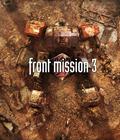



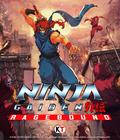
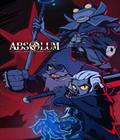

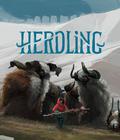

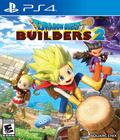 Dragon Quest Builders 2 is a Minecraft-like, open-world action/RPG that features new characters, an expansive world, unlimited building combinations, and a storyline that’s sure to satisfy longtime fans and newcomers alike!
Dragon Quest Builders 2 is a Minecraft-like, open-world action/RPG that features new characters, an expansive world, unlimited building combinations, and a storyline that’s sure to satisfy longtime fans and newcomers alike!





















































